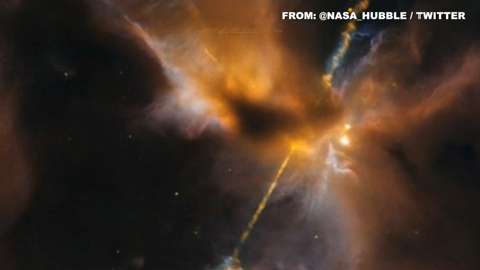Five times we wished we worked at NASA

NASA’s Juno spacecraft just completed its five-year journey across 1.8 billion miles of space, and it’s a pretty big deal.
After all, how far did you travel during your first few years of life?
The $1.1 billion Juno successfully threw itself into Jupiter’s orbit, making it the first spacecraft to study Jupiter from a such a close distance. Now, it’s going to collect data on how solar systems form.
It's a great time to work at NASA. After all, what other businesses let employees reach for the stars, literally? Here are a few other times we wished we paid more attention in science class.
Scott Kelly make astronaut dreams come true
NASA astronaut Scott Kelly made space travel look so cool that even we were rethinking our childhood dreams. Kelly, who has spent more consecutive time in space (340 days) than any other American, was most recently a part of a study to see how space radiation affects humans. His twin and fellow astronaut, Mark, stayed on Earth, while Kelly was launched into space, becoming part of a host of scientific studies.
During his one-year trip, he made his acting debut as an epic gorilla in a video that went viral and played ping pong with a water droplet.

He also gave us a peak into space life via his Twitter account.
Then, he returned two-inches taller (thanks to a space growth spurt) and took a week-long trip to Alaska on one of the world’s most luxurious cruise ships.
Discovery doubles the number of known planets
The Kepler telescope, which has been in orbit since 2009, found more than 1,200 new planets this year. Proving your mom is right – the universe might not revolve around you.
“This gives us hope that somewhere out there, around a star much like ours, we can eventually discover another Earth," said Ellen Stofan, chief scientist at NASA Headquarters in Washington.
Space expresso machines are real
Italian expresso machines are a part of any aw-worthy break room – and rocket. Last year, the SpaceX rocket included an espresso maker created by Italian coffee specialist Lavazza along with an Italian engineering company, Argotec, and the Italian Space Agency for use in space by NASA. The ISSpresso also makes tea, broth and other hot beverages.
Hubble spots an ancient galaxy
In March, NASA’s Hubble Space Telescope broke a cosmic distance record and spotted the oldest galaxy ever found.
“One of the Holy Grails of astronomy is to look back to see the first galaxies and, of course, stars when they formed,” Patrick McCarthy of the Giant Magellan Telescope Organization told Paste BN. "This discovery really pushes back the frontier further than we expected.”
NASA said the images show how the galaxy appeared 3.4 billion years in the past, 400 million years after the Big Bang.
NASA finds The Force
Sort of. A NASA telescope spotted "a cosmic, double-bladed lightsaber" the same day the "Star Wars: The Force Awakens" hit theaters. It's actually a newborn star that's shooting out twin jets of superheated gas. It's also in the Milky Way, not exactly a galaxy far, far away. Close enough, right?

Follow Ashley May on Twitter: @AshleyMayTweets